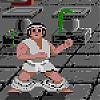As the CTO role has been redefined along the lines of the startup, a new role has emerged which encompasses parts of the CTO role, and parts of the role of the Program (or Project) Manager. This graphic from Mark Suster explains his view of the role along two axes of reference: Process vs Technical.
Both the VPE and CTO are both highly technical, yet the process orientation is polar. While CTO focuses on technical strategy, the VPE is focused on execution.
There’s a saying in business circles “Ideas are worthless, execution is everything” — regardless of the merit of the idea, if it’s not something real that people can use, it doesn’t matter. Execution is what creates a great product, encompassing functionality, reliability and ease of use.
As part an engineering team looking to execute in the best way possible, a VPE will balance the perfect product or design against the needs of the business. Engineering is a series of trade-offs. Speed vs. Reliability. Something small now vs. something bigger later. However, by ensuring the team is doing the ‘right’ things at the ‘right’ time using the ‘right’ technology we can create a harmony that delivers what we need right now but keeps options open in terms of future growth.
How does a VPE do this? There’s three important parts to the role.
Team Management
The most important part. A happy, trusting team delivers. A good VPE will help the team find their career path and execute on it. Assist navigation of tricky situations. Encourage cross-functional behaviour to create T-shaped developers to reduce hand-off and increase collaboration. I’ve heard the role referred to as ‘Engineer Whisperer’ and this probably isn’t too far from the truth.
Program Execution
Doing the right thing at the right time. This is a function of many different inputs and every team will operate differently depending on their core skills, level of competency and many other aspects. Broadly speaking, favour small, incremental changes over big-bang updates, working prototypes over detailed designs, and use data to inform program decisions.
Product Engineering Excellence
Product and Engineering operate as two sides of the same coin. Excellence exists at many levels, from operational items like ensuring we’re running the latest version of dependencies or that all security issues are patches, introducing new tooling to improve software observability, to larger design pieces such as helping the team decide whether to to consolidate their app development under a new stack. It operates at many different levels — a hierarchy of needs. But mainly it’s about ownership and pride in the work.
The VPE is a wearer of many hats, and balances the needs of the business, the team, the product and engineering aspirations against cold hard deadlines.
